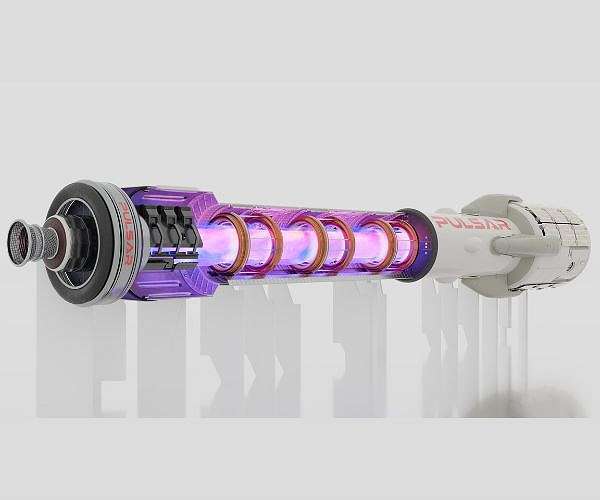20.06.2023

Pulsar is also developing simulations based on gas puffing data from the PFRC-2 in an effort to create predictive simulations of ion and electron behaviour in FRC plasma. Such predictive simulations are crucial for closed-loop control systems, a key component of a future PFRC reactor.
The UK-based company Pulsar Fusion, specializing in nuclear fusion, has announced a collaboration with the US firm, Princeton Satellite Systems. The collaboration will employ artificial intelligence (AI) in the design of a space rocket, aiming for a notably increased speed. This improvement could significantly decrease the mission time to Saturn's moons, reaching them in approximately two years.
Pulsar Fusion, located in Oxfordshire, and Princeton Satellite Systems, are set to harness AI machine learning simulations to develop a deep space rocket engine. The anticipated speed of this engine is around 500,000 mph, reducing the travel time to Mars to roughly 30 days. The announcement comes shortly after the signing of a UK/US defense sharing deal by Prime Minister Rishi Sunak in Washington.
Richard Dinan, Pulsar Fusion's founder and CEO, commented on the partnership: "By pooling our own research and resources with those of Princeton Satellite Systems, Pulsar has access to behavioural data from the fusion reactor (PRFC-2). Coupled with advancements in machine learning, this will enhance the development of our nuclear fusion rocket systems. Fusion propulsion doesn't require a vast infrastructure like terrestrial fusion energy for power stations on Earth.
"In comparison, space provides a vacuum and extremely cold temperatures, which is beneficial for fusion. If we manage to achieve fusion for energy, then fusion propulsion in space is a likely progression."
The collaboration will employ AI machine learning to scrutinize data from the PFRC-2 reactor. This data will help understand the behaviour of plasma under electromagnetic heating and confinement when used as an aneutronic propulsion system.
The companies will analyze plasma shots data from the PFRC-2 reactor, developed in conjunction with the Princeton Plasma Physics Laboratory (PPL). Advanced machine learning technologies will be used to interpret the behaviour of fusion plasma in a rocket engine configuration.
The research is a transatlantic partnership, examining how nuclear fusion Plasma behaves when exiting a rocket engine, emitting exhaust particles at high speeds.
Pulsar is working on simulations based on gas puffing data from the PFRC-2. The aim is to create predictive simulations of ion and electron behaviour in FRC plasma, which are necessary for closed-loop control systems, a crucial component of a future PFRC reactor.
Upon development, this technology could affect space travel times, potentially reducing the journey to Mars to 30 days and enabling trips to Saturn's moon Titan within two years.
Quelle: SD

